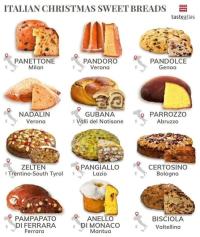Copy Link
Add to Bookmark
Report
Mead Lovers Digest #0459

Subject: Mead Lover's Digest #459, 14 February 1996
From: mead-request@talisman.com
Mead Lover's Digest #459 14 February 1996
Forum for Discussion of Mead Making and Consuming
Dick Dunn, Digest Janitor
Contents:
Re: Mead Lover's Digest #458, 9 February 1996 (DaveP@eworld.com)
Re: 1996 Capitol District Open (Dave Moore)
Re: Mead Lover's Digest #458, 9 February 1996 (EyezofWrld@aol.com)
Purple Mead! ("Craig Jones.")
searching for mead (Nick Remy)
Hoppy Braggot! (Russell Mast)
History and all that (Fred Hardy)
Dick Dunn's excellent analysis (Olson)
March Mashfest HB & Mead competition (Brian J Walter (Brewing Chemist)
(Jeff Smith)
pH and importance. (Douglas Thomas)
NOTE: Digest only appears when there is enough material to send one.
Send ONLY articles for the digest to mead@talisman.com.
Use mead-request@talisman.com for [un]subscribe/admin requests. When
subscribing, please include name and email address in body of message.
Digest archives and FAQ are available for anonymous ftp at ftp.stanford.edu
in pub/clubs/homebrew/mead.
----------------------------------------------------------------------
Subject: Re: Mead Lover's Digest #458, 9 February 1996
From: DaveP@eworld.com
Date: Fri, 9 Feb 1996 10:37:27 -0800
Trevor Floyd <apu0007@corcomsv.corcom.com> writes:
>I am looking for resipies that can be completed in 10 weeks. I am a college
>student and my Chem instructor is allowing me to do a lab on "the effects of
>yeast on sugary bev." Is there a recipe that can be completed and tastes
>good in this time frame? your comments appreciated. Trev
apu0007@corcom.com
The recipes <http://dts.apple.com/davep/mme/recipe-hangover.html>,
<http://dts.apple.com/davep/mme/cgm-recipe.html>, and
<http://dts.apple.com/davep/mme/bbm-recipe.html> should all do the trick.
They'll benefit from longer aging, but they're all drinkable in 10 weeks.
- -DaveP
"Isn't sanity a one-trick pony anyway? You only get one trick:
rational thought. But when you're crazy, the sky's the limit!"
--The Tick
Dave Polaschek - home:davep@eworld.com work:dpolasch@apple.com
------------------------------
Subject: Re: 1996 Capitol District Open
From: moore@mnsinc.com (Dave Moore)
Date: Fri, 9 Feb 1996 13:53:57 -0500 (EST)
Fred,
I entered the last Capitol District Open and was rather dismayed to have
been down rated by one of the judges for "not using a beer bottle like
everyone else". I used a perfectly legitimate green "wine bottle".
I think that I will no longer enter mead in a BEER & "Other" contest.
Any plans for a true MEAD contest?
------------------------------
Subject: Re: Mead Lover's Digest #458, 9 February 1996
From: EyezofWrld@aol.com
Date: Fri, 9 Feb 1996 20:52:48 -0500
The reason I am interested in mead fermentation with Lambic yeast is to
produce a "tart" quality - thereby not having to include any acids in the
must (ascorbic, etc...) Lambic fermentation uses lactobacillus (or
pediococcus) to produce the tartness. I have a batch of the afore mentioned
concoction fermenting right now - I imagine it will be a long time before I
can report any results.
------------------------------
Subject: Purple Mead!
From: "Craig Jones." <Drake_Morgan@airservices.gov.au>
Date: Mon, 12 Feb 1996 09:49:00 +1000
Chaps,
Does anyone know of any microorganisms, phenomena, or
chemical reaction that can make 24hr mead wort turn purple?
My mead seems to have purple/dark brick red colloidal clots
collecting on the edge of the fermenter (that look rather like
the stuff you get out of a red wine bottle), I'm using a new recipe,
but all the stuff I'm using I've used before apart for a bottle
of lime essence (thrown in just for the hell of it) which
contained ethanol, lime oil, tartrazine, and a common blue dye
(whose name eludes me). Any ideas. Could it be the 10g of
Tannin (in 60L)?
24 hours later, the clots have disappeared but there
is a clear yellow liquid with a purple scum on top. No signs
of any Yeast activity yet.
Here is the recipe:
20ml Jar of Lime Essence and juice from 5 limes thrown
in the bottom of the fermenter (60L).
Followed up by 9kg of Yellow Box Eucalyptus Honey (1/3
of 28kg) boiled with water (to remove wax), a
total of 20L volume.
I then added 10g of Tannin and 50g of Acid Blend (Citric,
Tartaric, Malic Acids) and some yeast nutrient
(the standard stuff I believe)
A spice bag containing 120 cloves, 15g of Crushed Cinnamon
sticks and the zest of 5 limes.
When still a little too warm, I pitched the yeast (ale yeast).
Help? I've never seen anything like this before!!!
Regards,
Craig Jones.
- ---------------------------------------------------------------------------
| DUCK MORGAN OF THE 15TH and a HALF CENTURY!!! |
- ---------------------------------------------------------------------------
| drake.morgan@airservices.gov.au| EMAIL Warning!!! |
| PH: (06) 2685099 (BH) | All replies bounce, please do not reply|
| (06) 2545496 (AH) | to this message. Create and send new! |
- --------------------------------------------------------------------------
| I've eaten 7 kinds of Meat. |Technological progress is like an axe in|
| I'm a true renaissance man! |the hands of a pathological criminal. |
| - Homer Simpson | - Albert Einstein|
- ---------------------------------------------------------------------------
------------------------------
Subject: searching for mead
From: Nick Remy <d020620c@dcfreenet.seflin.lib.fl.us>
Date: Mon, 12 Feb 1996 12:40:52 -0500 (EST)
Does anyone know of a brewery in south florida that brews mead?
Nick Remy
d020620c@dcfreenet.seflin.lib.fl.us
------------------------------
Subject: Hoppy Braggot!
From: Russell Mast <rmast@fnbc.com>
Date: Mon, 12 Feb 1996 12:27:46 -0600
> Subject: Categories, Categories
> From: Fred Hardy <fcmbh@access.digex.net>
> Braggot with noticeable hop bitterness, character and/or aroma is beer
> with lots of honey in it.
No, actually, it's not. I've brewed beer with lots of honey in it, and I've
brewed a Braggot with noticable hop bitterness, character and aroma, and they
are two distinct beverages, regardless of your prattling.
> - - Drop cyser (BTW, there is no perry subcategory in either mead or cider)
> from the mead category (enter under specialty cider or melomel or both)
> - - Drop Hippocras as a subcategory (enter as a spiced melomel)
> - - Drop Pyment as a subcategory (it is a melomel)
Sounds fine to me.
> - - Drop hopped braggot from any category, or drop braggot altogether
What the hell is your problem with hops? Why should hops be treated as such
a special (= anethema) spice by meadmakers? Yes, I know it's very special in
the world of beer. In meads, IMO, it could be just another spice. If I made
a bracket with a very powerful anise aroma or mint flavor, why should that be
any more acceptable than one with a powerful hop character?
> - - Enter hopped beer with lots of honey in it as a specialty beer.
We already do.
> - - Drop the lead statement that ciders are made with apple juices to
> permit perry, peach, guava, etc. ciders. They can be entered as specialty
> cider, or create a non-apple subcategory. A spiced peach cider made with
> honey could be entered as a melomel or specialty cider or both. Folks
> enter the same beer in more than one subcategory all the time. Why not
> ciders/melomels?
That sounds fine to me. Except, how do you tell the difference between a peach
cider suitable for entry in a homebrew competetion from a peach wine suitable
for a winemaking competetion? (Or, is it both? Why both?)
> More flames, please. It was 20 degrees this AM and heat is welcome.
pblptlbtplbplbtpltb! Drink hopped mead everyday. (Well, you asked for it...)
Man, a week and a half ago, the high in Chicago was -6 F. So don't tell
me about the cold. (Why, when I was your age...)
Dick Dunn says lots of great things, and then says :
> nobody expects to judge both dogs and cats together.)
Of course not, that'd be totally unfair. The dogs would win hands-down
every time.
> going to need categories for cabernet and pulque and kvass and koumiss in
> your "homebrew" competition.
I think cabernet is out of place in homebrew competetions, but I'd like to
see kvass and koumiss. I guess those would work as specialty beers. Not sure
what pulque is, I probably don't want to know.
> Let the homebrewers and the mead-makers and the cider-makers and the wine-
> makers sit down and figure out their categories to suit each of their own
> specialties. Let them discuss the crossover categories with one another...
> but expect that they may come to differing conclusions, and realize there's
> nothing wrong with that.
At the same time, I think that "just a beverage exposition" is not necessarily
a bad thing, either. (Though, yeah, it makes judging a bit harder.)
> Subject: Re: Varietal and Misc. Comments
> From: Steven Rezsutek <steve@synapse.gsfc.nasa.gov>
> I'd go half way with you on this one. Think about what the
> adj. "varietal" implies -- coming from or displaying the characteristics
> of a particular variety [of something]. As you indicated above, there
> is no one Wildflower. Who's to say that someone couldn't duplicate the
> taste of a "wildflower" by blending several honeys together after the
> fact, rather than letting the bees do it? That would sort of nix it
> from being a "varietal honey/mead", IMHO.
Not IMO. I think that, as the original poster started with (was that you?),
the categories should be defined by TASTE rather than RECIPE. I once tried
to brew a Doppelbock, screwed up on my extraction, and ended up with an
"American Bock" (new category tried out here and there). It was pretty good,
though, and fit it's new category. By the same token, if you blend tupelo
and alfalfa honeys together, and it really showcases one or both or some
distinct 'variety' of honey that someone doesn't know about, why not call it
a "varietal"?
On a lark, I once brewed with Cilantro Leaves. After a couple months ageing,
some chemical reactions occured, and the taste was just like Coriander Seeds.
(Not real surprising - they're from the same plant, but they taste very
different.) If I were to enter it into a category which called for Coriander,
(eg. Wit Beer) that would be appropriate. (Actually, this one was judged as
having "too much coriander" which gave me and Jake, my brew buddy, a good
laugh at the expense of some innocent judges.)
Essentially, I'm of the opinion that regardless of what categories you decide
to use, they should be defined by the taste. (And appearance and body, but
solely defined by their sensory impact.) How you achieve that sensation
might vary a bit, but the idea should be that you're trying to achieve that,
rather than follow some recipe or rules of what's an acceptable path to glory.
- -R
------------------------------
Subject: History and all that
From: Fred Hardy <fcmbh@access.digex.net>
Date: Mon, 12 Feb 1996 14:37:43 -0500 (EST)
In his post, Dick Dunn cautions against using points in history
or bits of data to decide style guidelines. I suspect he has not
taken the BJCP judge exam. Historical basis for lambics is often
asked. The origin of India Pale Ale is a good question, as is the
origin of American brown ale. The origin of Imperial Stout or
bock is a good question to test overall knowledge of beer. The
guidelines for Vienna are buried in a point in history, since
commercial examples may or may not exist. California steam is
definitely a point of data - it's what Fritz Maytag brews, even
though historically it was brewed all over the west and midwest
and came in many different forms. An equally restricted style is
Dusseldorf-style alt, which is not only a data point of a city,
but the prototype is said to be a single brewery in the city.
American amber is not an AHA style in part because it has not
been around long enough to develop a history.
Obviously, we must start and stop somewhere. It is possible to
reconstruct what braggot probably was from building upon many
varied sources. Choosing to ignore that reconstruction certainly
removes the restraint of history and single points of data. It
substitutes the American way: it is whatever it is because we say
it is. Maybe it's an improvement.
He also voices his belief that beer, mead and cider should not be
in the same homebrew competition. I agree, and these diverse
beverages would not be judged in the same competition if there
were many good alternatives. A competition needs around 100-150
entries to break even on expenses. Single style open competitions
rarely draw that many. Add to that the fact that many mead and
cider makers are avid homebrewers, and you get an excellent
rational for having all of them in the same competition. I wish
it were different, but that is reality. I suspect the pied piper
of American Homebrewing, Charlie P. himself, also had a large
role in the revival of meads by including them in his brewing
bibles. Again, HBers make mead, and drink mead.
Another reality is that there are beer judges and wine judges.
Which do you want judging meads and ciders? I suggest beer judges
are far more likely to have tried a range of meads and ciders
than are wine judges (IMO). I would vote for the beer judges
every time.
Cheers, Fred
==============================================================================
We must invent the future, else it will | <Fred Hardy>
happen to us and we will not like it. |
[Stafford Beer, "Platform for Change"] | email: fcmbh@access.digex.net
------------------------------
Subject: Dick Dunn's excellent analysis
From: olson99@mack.Rt66.com (Olson)
Date: Mon, 12 Feb 96 20:06:19 MST
Thank you, Dick Dunn, for a well reasoned discussion on the cross-over
categories between mead and beer, and mead and cider! (See MLD #458)
You made many good points that I thoroughly agree with. I really like
your bottom line:
>And for pete's sake, stop trying to use selected points in history or
>single bits of data to justify narrow definitions!
There is enough history that one can select isolated examples to "prove"
almost any political or social statement. Historical references to mead
need to be kept in perspective.
Gordon Olson
------------------------------
Subject: March Mashfest HB & Mead competition
From: walter@lamar.ColoState.EDU (Brian J Walter (Brewing Chemist))
Date: Tue, 13 Feb 1996 11:27:59 -0700 (MST)
Sixth Annual March Mashfest
A Homebrewed Beer and _Mead_ Competition
The March Mashfest is Colorado's largest club-sponsored homebrew
competition, and 2nd only to the AHA Nationals. We typically have 15-20
mead entries in addition to the beer entries we receive, and will award a
best of show mead award this year. If you want to judge and do not
receive registration info this week contact Brian Walter (see below).
Where: Fort Collins, CO
Entries Due: 26 Feb - 9 March 1996
Judging: 22-23 March 1996
Awards: 23 March 1996
For more info check http://www.fortnet.org/~smills/masht.html
or contact
Brian J Walter
618 Tyler Street
Fort Collins, CO 80521
(970) 493-2586
walter@lamar.colostate.edu
Brian J Walter Chemistry Graduate Student walter@lamar.colostate.edu
RUSH Rocks Best Homebrewer & BJCP Certified Beer Judge Go Pack!
------------------------------
Subject:
From: snsi@win.bright.net (Jeff Smith)
Date: Tue, 13 Feb 1996 12:32:12 -0600 (CST)
Howdy neighbors and Mead lovers,
I've got one issue under my belt so I think its about time I get my first
post out of the way.
First thanks to Dick Dunn and everybody else responsible for run the MLD.
I've have my fifth batch of mead in the primary now and I'm thinking
seriously about what number six will be. Here's my problem, though I've made
mead I have never tried mead made by someone else. When I started brewing
beer I had beer, at least twice, but I've been exposed mead other than
written references. Unfortunately Barnes Wisconsin has only one
homebrewer/mead maker within town limits, me. Is there a widely distributed
commercial example of worth a try? Maybe someone on the list who is north of
Hayward, WI and south of lake Superior makes mead?
I'm also interested in the list's members experiences with darker honeys
such as buckwheat, "fall" honey and purple loose strife (which I have heard
is now available in Ontario, CA due to the followers invasion). What type
of recipe would these dark honey be appropriate in? How much color should I
expect to carry over?
Does anyone know of a source you can find smaller 10 oz or 7 oz ponies type
bottles?
Will cooler, slower fermantations lower the amounts of some of the "higher"
and fusel alcohols that I think I've been getting in my summer batches? The
reason I think I may have a problem in this vane is the drastic different
affects I've had from batch to batch (i.e. head aches, single bottle hangovers).
And finally, in preparation for making a melomel of some kind this summer,
I've started a batch (#5) using Lavin's "killer yeast" (like a fool I threw
away the yeast packs and Lavin catalog). Does anyone have any experience
with this type of yeast? My thought was that I could worry a little less
about sanitizing my fruit and maybe avoid some pectin formation if I used
this yeast. Have put my foot in this one? BTW if would I would have known
about the MLD, I would have asked question first than put my foot in it.
Thanks in advance and pop a mead for me.
Jeff Smith
'71 HD Sprint 350SX
snsi@win.bright.net
Barnes, WI
------------------------------
Subject: pH and importance.
From: Douglas Thomas <thomasd@uchastings.edu>
Date: Wed, 14 Feb 1996 08:01:25 -0800 (PST)
I am doing a test batch of strawberry melomel, and want to know the
target pH for said item. It is going to be high alcohol (14%) and with
some residual sugar. I ask this because I finally got some accurate pH
strips, the others just told me to within 1 pH degree. Not too good.
post or send e-mail
Doug Thomas
thomasd@uchastings.edu
------------------------------
End of Mead Lover's Digest #459
*******************************
























